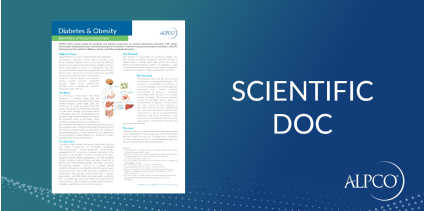Honoring Scientific Advancements in the Discovery of Insulin
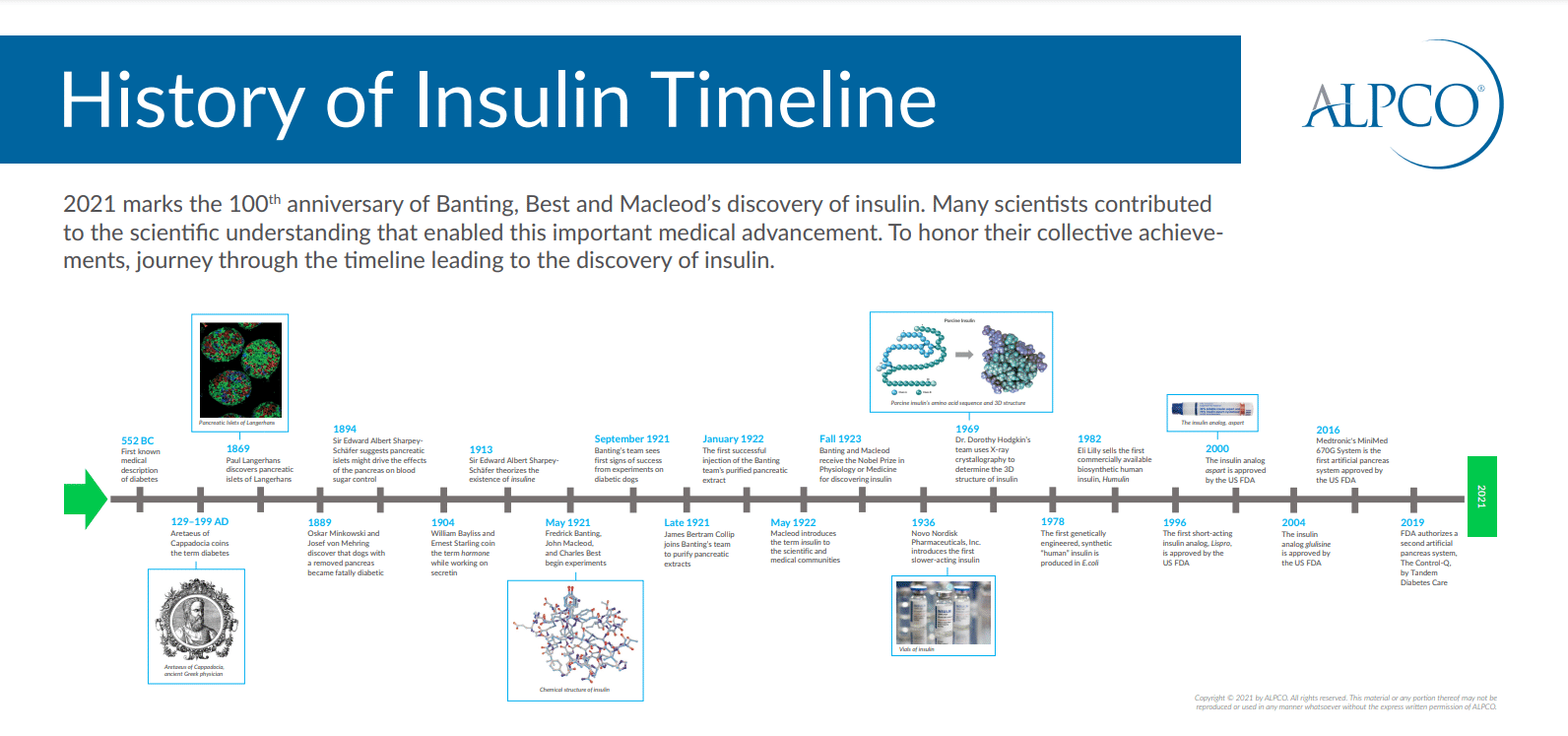
Celebrate Insulin’s Discovery:
The year 2021 marked the 100th anniversary of Banting, Best, and Macleod discovery of insulin. However, many other scientists also contributed to the foundational understanding of endocrinology that enabled one of the most important medical advancements in the early 20th century. To honor their collective achievements, download and journey through our "History of Insulin Timeline".
Diabetes in Ancient Times
The term “Diabetes Mellitus” comes from both Greek and Latin. “Diabetes” is rooted in ancient Greek, meaning ‘a passer through’ like the high levels of urine produced by the patient. The ancient Greeks would diagnose the disease by tasting a patient’s urine. Diabetic urine would have a sweet taste. “Mellitus” comes from Latin for honey-sweet. It was not until the 19th century that a clinical test was developed to test for diabetes. This test was invented by Karl Trommer and tested for sugar in the urine using acid hydrolysis.1,2
The Beginning of Endocrinology
For a long time, many thought diabetes was a liver or stomach disorder. However, the awareness that both certain states of urine and levels of thirst are related to blood sugar levels has grown over the centuries. In 1889, German researchers Oskar Minkowski and Josef von Mehring discovered that dogs with their pancreas removed immediately became severely and fatally diabetic. It became clear that there was some element in the pancreas that protected the body from diabetes.1,3,4,5 During the late 19th - early 20th century, scientists realized that there were substances secreted by various organs to exact a biological influence on remote locations within the body. In 1904, William Bayliss and Ernest Starling coined the term “hormone” during their work on secretin, a hormone involved in digestion.6
Discovering the Pancreatic Islets of Langerhans
In 1869, a German researcher named Paul Langerhans discovered a separate system of cells in the pancreas, later named the islets of Langerhans. These pancreatic islets were viewed as the possible source of the elusive internal secretion that could prevent diabetes.1,4
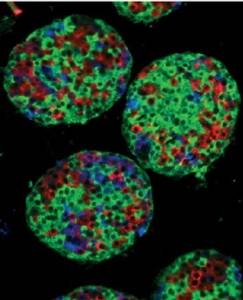
Figure 1: Image of Pancreatic Islets of Langerhans
Theorizing the Existence of Insulin
Around 1894, Sir Edward Albert Sharpey-Schäfer suggested that the pancreatic islets might be driving the effects of the pancreas on blood sugar control. While he did not isolate the protein we now understand to be insulin, he used the term “insuline” to describe this yet undiscovered substance. He pointed to both its existence and its importance in 1913.1,3,5
Banting and Macleod Collaborate to Discover Insulin
Fredrick Banting approached John Macleod with his idea to isolate islet cells in a canine pancreas after ligature to induce cellular break down. At the time, it was known that the islets cells broke down at a slower rate than other pancreatic cells, offering a method to isolate them. Macleod had extensive research facilities with enough space and dogs for Banting to perform further experiments. Additionally, Macleod offered Banting the assistance of one of his students, Charles Best. The team started their work in the spring of 1921.2,3,4,5
First Sign of Success in September 1921
After several setbacks, Banting finally succeeded in injecting an extract of degenerated pancreas from a duct-ligated dog into another depancreatized, diabetic dog. He observed a sharp decline in the diabetic dog’s blood sugar. As the experiments began to show successful drops in blood sugar, they moved to larger cow pancreases to mass produce the islets cells.2,3,4,5
Purifying Pancreatic Extracts
Work soon began to purify the anti-diabetic factor from the pancreas, but the extracts were crude and inconsistent. Banting brought on board a skilled biochemist, James Bertram Collip, who succeeded in increasing the purity of the pancreatic extracts.2,3,4,5
The First Insulin Injection
In 1922, the team successfully injected their pancreatic extract into a 14-year-old diabetic boy. Over time, his blood and urinary sugars became normal and his other diabetic symptoms were alleviated. This process was repeated successfully with six more patients.2,3,4,5
A Nobel Prize for Discovering Insulin
On May 3, 1922, Macleod delivered a paper, “The Effects Produced on Diabetes by Extracts of Pancreas,” at the Washington, DC meeting of the Association of American Physicians. In this paper, the team first used the word “insulin.” Several months later, in 1923, Banting and Macleod were jointly awarded the Nobel Prize in Physiology or Medicine for their discovery.1,2,3,4,5
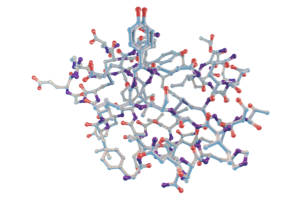
Figure 2: Chemical structure of insulin
Large Scale Production of Insulin
Soon after, the medical firm Eli Lilly started large-scale production of insulin. It wasn’t long before there was enough insulin to supply the entire North American continent. Because the insulin preparation required several injections daily, investigators worked to find ways to prolong its duration of action. In the decades to follow, manufacturers developed a variety of slower-acting insulins, the first introduced by Novo Nordisk Pharmaceuticals, Inc., in 1936. Insulin from cattle and pigs was used for many years to treat diabetes and saved millions of lives, but it was imperfect, as it caused allergic reactions in many patients.2,5
Discovery of Insulin’s 3D Structure
In 1969, a team led by the Nobel Laureate Dr. Dorothy Hodgkin, used X-ray crystallography to determine the 3D structure of insulin . Dr. Hodgkin improved X-ray crystallography methods during her research career to sufficiently be able to understand the complex 3D structure of porcine insulin. Her research showed the overlay between the A Chain and B Chain in the porcine insulin molecule. The discovery of insulin’s 3D structure enabled more scientific breakthroughs such as the development of insulin analogs.7,8,9
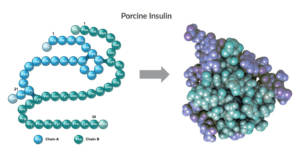
Figure 3: Porcine insulin’s amino acid sequence and 3D structure
Synthetic Human Insulin
The first genetically engineered, synthetic “human” insulin was produced in 1978 using E. coli bacteria. Eli Lilly went on in 1982 to sell the first commercially available biosynthetic human insulin under the brand name Humulin.2,5
Insulin Analogs
To further improve the actions of insulin after administration, pharmaceutical companies made different modifications to the sequence of amino acids of the insulin polypeptide. These modifications changed the pharmacokinetics and led to faster absorption, earlier peak, and shorter duration of action. Lispro was the first short-acting insulin analog approved in 1996 followed by aspart in 2000, then glulisine in 2004.2

Figure 5: Vial of the insulin analog, Aspart
The Fight Against Diabetes Continues After Discovering Insulin
100 years after the discovery of insulin, diabetes still has a significant impact on hundreds of millions of people worldwide; the disease is responsible for over a million deaths each year. Despite the treatments currently available today, research is still required to better understand the myriad biological defects driving this disease. Today, having tools that allow for accurate insulin measurement, as well as other related markers such as proinsulin and c-peptide, help advance this research. ALPCO is proud to be a part of the solution by assisting researchers as they work to find a cure.
Continue Learning About Diabetes
Learn more about diabetes, and the relevant biomarkers used to research the disease, in our ebook, Energy Homeostasis.
References
- Sajid, et al (2016). Diabetes Throughout Ages; An Overview. European Journal of Pharmaceutical and Medical Research 2016 3(4): 435-440. net.
- Quianzon and Cheikh (2012). History of insulin. Journal of Community Hospital Internal Medicine Perspectives 2012; 2: 18701. PMID: 23882369.
- Felman (2018). Who discovered insulin? Medical News Today 2018. com.
- Bliss (2015). The discovery of Insulin. The Canadian Encyclopedia. ca.
- The American Diabetes Association (2019). The History of a wonderful thing we call insulin. American Diabetes Association. org.
- Modlin and Kidd (2001). Ernest Starling and the Discovery of Secretin. Journal of Clinical Gastroenterology 2001 32(3): 187-192. PMID: 11246341.
- Royal Society of Chemistry (2014). Dorothy Hodgkin FRS. org.
- Adams, et al. (1969). Structure of Rhombohedral 2 Zinc Insulin Crystals. Nature. 01 November 1969;224:491–495. doi:10.1038/224491a0.
- Ward & Lawrence. (2011). Landmarks in Insulin Research. Front Endocrinol(Lausanne). 2011; 2:76. PMCID: PMC3356151.


